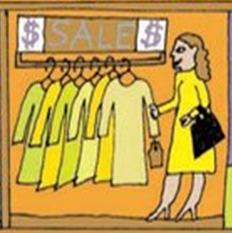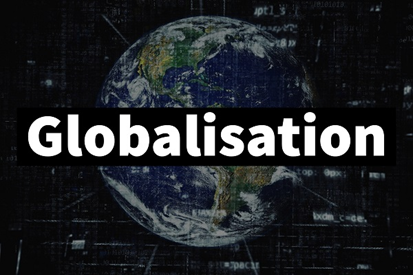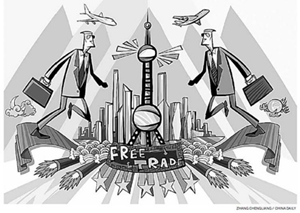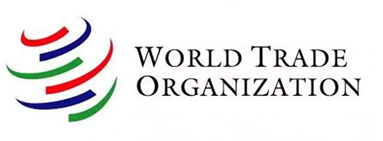Production across country
- Books Name
- Understanding Economic Development Class-10
- Publication
- PathSet Publications
- Course
- CBSE Class 10
- Subject
- Economics
PRODUCTION ACROSS COUNTRY
- Until the middle of the twentieth century, production was largely organized within countries. What crossed the boundaries of these countries were the raw materials, foodstuff and finished products.
- Colonies such as India exported raw materials and foodstuff and imported finished goods. Trade was the main channel connecting distant countries.
- This was before large companies called multinational corporations (MNCs) emerged on the scene.
- An MNC is a company that owns or controls production in more than one nation. MNCs set up offices and factories for production in regions where they can get cheap labor and other resources. This is done so that the cost of production is low and the MNCs can earn greater profits.
- The MNC not only sells its finished products globally but more importantly, the goods and services are produced globally. As a result, production is organized in increasingly complex ways.
- The production process is divided into small parts and spread out across the globe.
Interlinking products across the border
- MNCs set up production where:
- It is close to the markets
- There is skilled and unskilled labor available at low costs
- The availability of other factors of production is assured
- Government policies look after their interests.

- Having assured themselves of these conditions, MNCs set up factories and offices for production.
- The money that is spent to buy assets such as land, building, machines and other equipment is called investment.
- The investment made by MNCs is called foreign investment. Any investment is made with the hope that these assets will earn profits.
- At times, MNCs set up production jointly with some of the local companies of these countries. The benefit to the local company of such joint production is two-fold.
- First, MNCs can provide money for additional investments, like buying new machines for faster production. Second, MNCs might bring with them the latest technology for production.
- However, the most common route for MNC investments is to buy up local companies and then to expand production.

- There is another way in which MNCs control production. Large MNCs in developed countries place orders for production with small producers. Garments, footwear, sports items are examples of industries where production is carried out by a large number of small producers around the world. The products are supplied
- to the MNCs, which then sell these under their own brand names to the customers.
- These large MNCs have tremendous power to determine price, quality, delivery, and labor conditions for these distant producers.
- Hence, by setting up partnerships with local companies, by using the local companies for supplies, by closely competing with the local companies, or buying them up, MNCs are exerting a strong influence on production at these distant locations.
- As a result, production in these widely dispersed locations is getting interlinked
Foreign Trade
- Books Name
- Understanding Economic Development Class-10
- Publication
- PathSet Publications
- Course
- CBSE Class 10
- Subject
- Economics
FOREIGN TRADE
- Foreign trade creates an opportunity for the producers to reach beyond the domestic markets, i.e., markets of their own countries.
- Producers can sell their products not only in markets located within the country but can also compete in markets located in other countries of the world.
- Similarly, for the buyers, the import of goods produced in another country is one way of expanding the choice of goods beyond what is domestically produced.
PRODUCTS INFLOW OF OTHER COUNTRIES

- With the opening of trade, goods travel from one market to another. Choice of goods in the markets rises. Prices of similar goods in the two markets tend to become equal. Moreover, producers in the two countries now closely compete against each other even though thousands of miles separate them.
- Foreign trade thus results in connecting the markets or integration of markets in different countries.
- For example, Chinese manufacturers learn of an opportunity to export toys to India, where toys are sold at a high price. They start exporting plastic toys to India. Buyers in India now have the option of choosing between Indian and Chinese toys. Because of the cheaper prices and new designs, Chinese toys become more popular in the Indian markets.
- In the competition between Indian and Chinese toys, Chinese toys prove better. Indian buyers have a greater choice of toys and at lower prices. For the Chinese toy makers, this provides an opportunity to expand their business. The opposite is true for Indian toy makers. They face losses, as their toys are selling much less.
Globalisation
- Books Name
- Understanding Economic Development Class-10
- Publication
- PathSet Publications
- Course
- CBSE Class 10
- Subject
- Economics
GLOBALISATION
- Foreign investment by MNCs in various countries has been rising. At the same time, foreign trade between countries has been rising rapidly. A large part of the foreign trade is also controlled by MNCs.
- The result of greater foreign investment and greater foreign trade has been greater integration of production and markets across countries.
MEANING AND CONCEPT

- Globalization is this process of rapid integration or interconnection between countries.
- MNCs are playing a major role in the globalization process. More and more goods and services, investments and technology are moving between countries.
- Besides the movements of goods, services, investments and technology, there is one more way in which the countries can be connected. This is through the movement of people between countries.
- People usually move from one country to another in search of better income, better jobs, or better education.
Factors related Globalisation
- Books Name
- Understanding Economic Development Class-10
- Publication
- PathSet Publications
- Course
- CBSE Class 10
- Subject
- Economics
FACTORS RELATED TO GLOBALISATION
Let us have a glimpse at different factors that led to globalization:
- Transportation technology: This has made much faster delivery of goods across long distances possible at lower costs.
- Information and communication technology: In recent times, technology in the areas of telecommunications, computers, Internet has been changing rapidly. Telecommunication facilities (telegraph, telephone including mobile phones, fax) are used to contact one another around the world, to access information instantly, and to communicate from remote areas. Satellite communication devices have facilitated this. The Internet also allows us to send instant electronic mail (e-mail) and talk (voice-mail) across the world at negligible costs.
TRADE RULES
- Let us recall the example of the import of Chinese toys. Suppose the Indian government puts a tax on the import of toys. This implies that those who wish to import these toys would have to pay tax on this. Because of the tax, buyers will have to pay a higher price on imported toys. Chinese toys will no longer be as cheap in the Indian markets and imports from China will automatically reduce. Indian toy-makers will prosper.
- Tax on imports is an example of a trade barrier. It is called a barrier because some restriction has been set up. Governments can use trade barriers to increase or decrease (regulate) foreign trade and to decide what kinds of goods and how much of each, should come into the country.

- The Indian government, after Independence, had put barriers to foreign trade and foreign investment, which were necessary to protect the budding Indian industries.
- Starting around 1991, the government decided that the time had come for Indian producers to compete with producers around the globe to improve the performance of Indian industries affected by the competition. Thus, barriers to foreign trade and foreign investment were removed largely.
- This meant that goods could be imported and exported easily and foreign companies could set up factories and offices here. Removing barriers or restrictions set by the government is what is known as liberalization. With the liberalization of trade, businesses are allowed to make decisions freely about what they wish to import or export. The government imposes much fewer restrictions than before and is therefore said to be more liberal.
World Trade Organisation
- Books Name
- Understanding Economic Development Class-10
- Publication
- PathSet Publications
- Course
- CBSE Class 10
- Subject
- Economics
WORLD TRADE ORGANISATION
- World Trade Organisation (WTO) is an organisation whose aim is to liberalise international trade. Started at the initiative of the developed countries, WTO establishes rules regarding international trade, and sees that these rules are obeyed.
RULES AND REGULATIONS OF WTO
- Though WTO is supposed to allow free trade for all, in practice, it is seen that the developed countries have unfairly retained trade barriers. On the other hand, WTO rules have forced developing countries to remove trade barriers.

IMPACT OF GLOBALISATION ON INDIA:
- Globalization and greater competition among producers - both local and foreign producers - have been of advantage to consumers. There is a greater choice before these consumers who now enjoy the improved quality and lower prices for several products. As a result, these people today, enjoy much higher standards of living than was possible earlier.
- MNCs have been interested in industries such as cell phones, automobiles, electronics, soft drinks, fast food, or services such as banking in urban areas. In these industries and services, new jobs have been created. Also, local companies supplying raw materials, etc. to these industries have prospered.
- Secondly, several of the top Indian companies have been able to benefit from the increased competition by investing in newer technology and production methods and raising production standards. Moreover, globalization has enabled some large Indian companies to emerge as multinationals themselves. Example: Tata Motors (automobiles), Infosys (IT), Ranbaxy (medicines), Asian Paints (paints), etc.
- Globalization has also created new opportunities for companies providing services, particularly those involving IT.
- However, the growth is not parallel amongst all sections. Batteries, capacitors, plastics, toys, tires, dairy products, and vegetable oil are some examples of industries where the small manufacturers have been hit hard due to competition; This is because it is cheaper to import the same products rather than buying the domestic ones at higher prices.
- Globalization and the pressure of competition have substantially changed the lives of workers. Faced with growing competition, most employers these days prefer to employ workers ‘flexibly’. This means that workers’ jobs are no longer secure
STRUGGLE FOR FAIR GLOBALISATION:
- Fair globalization would create opportunities for all and also ensure that the benefits of globalization are shared better.
- The government can play a major role in making this possible. Its policies must protect the interests, not only of the rich and the powerful but all the people in the country. Example: Proper implementation of labor laws, using trade and investment barriers wherever necessary etc.
- People can also participate in this through massive campaigns.

 PathSet Publications
PathSet Publications
